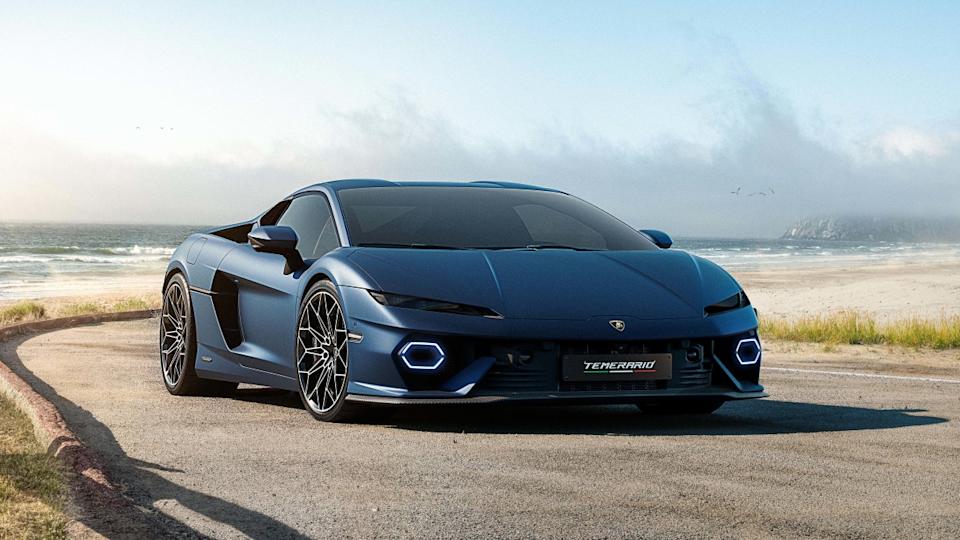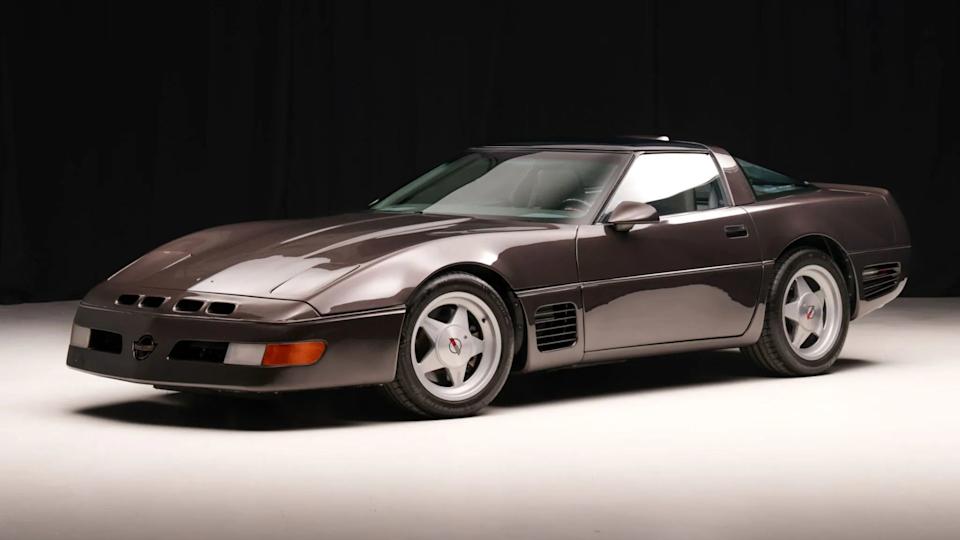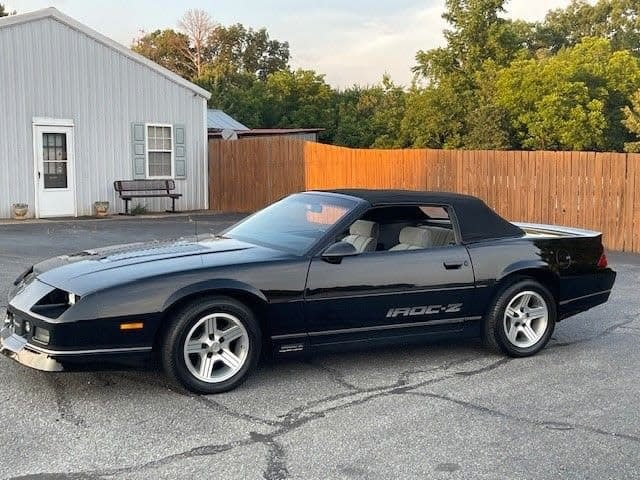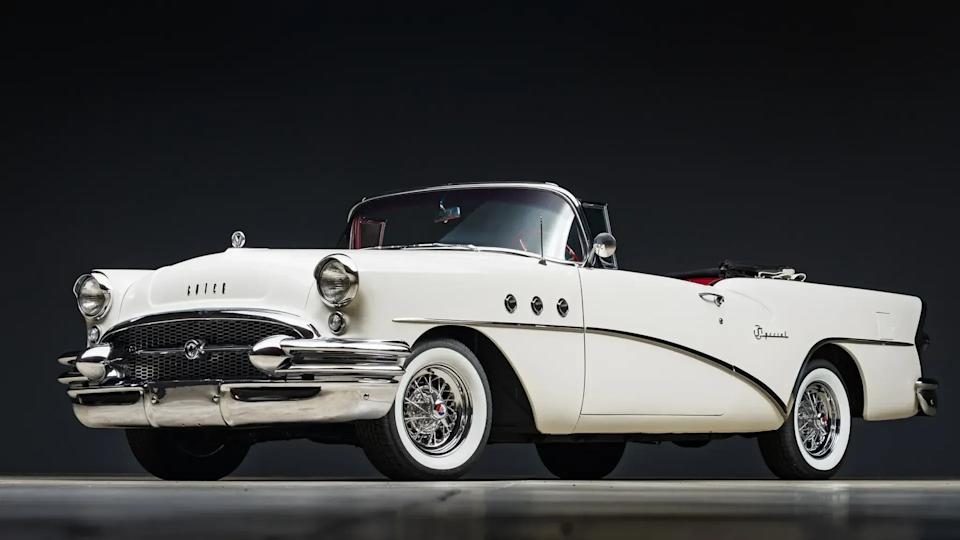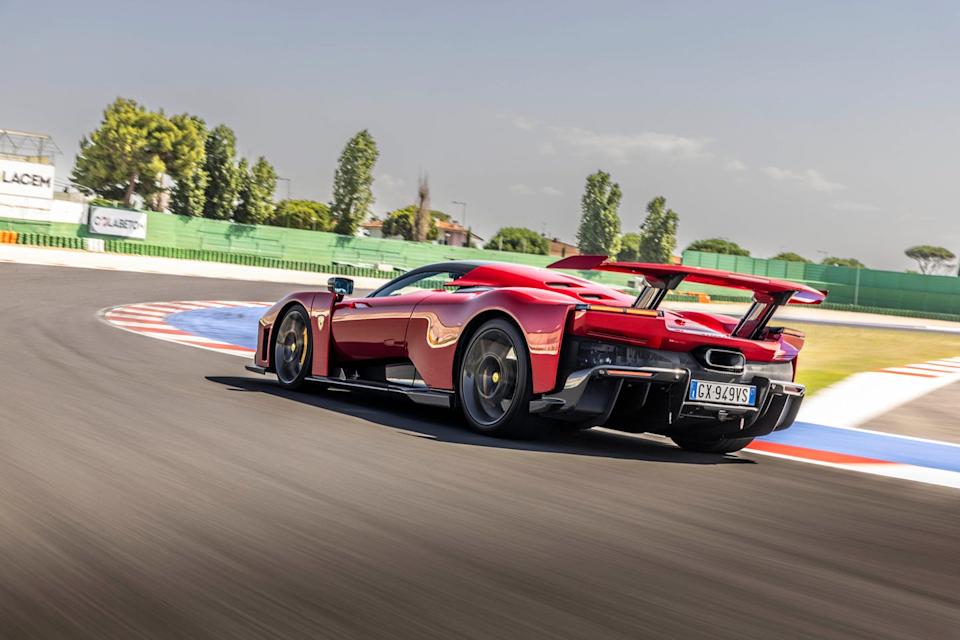
At a point where many internal-combustion engines are at or nearing their rev limit, the Ferrari F80's twin-turbocharged 3.0-liter V-6 is just getting limbered up for its manic scramble toward its 9000-rpm redline. The shift lights streak from the left across the top of the squared-off steering wheel, red and then blue, and you'd better pull the paddle for an upshift as soon as your brain registers the first flash of the LED, because the 888-hp peak arrives at 8750 rpm, and the rev limiter steps in at 9200. Your ears—including the parts assigned to the vestibular system—won't warn you of the impending rev cut because the V-6 sounds and feels like it'll keep pulling to 15,000 rpm, the limit for a contemporary Formula 1 car. That's not a coincidence, because the F80, like its predecessors all the way back to the 288 GTO, intentionally evokes F1. But there is a major difference—with 1184 horsepower, the F80 is more powerful than a modern F1 car.
And that's why our first experience behind the wheel is at Misano World Circuit Marco Simoncelli, near Italy's Adriatic coast, rather than Ferrari's own Fiorano test track. The F80 needs room to roam, and Misano, a 2.6-mile MotoGP track, offers the long straights and fast corners to adequately exercise a car that generates 2315 pounds of downforce at 155 mph and employs real-deal racing brakes. Misano also has wide gravel traps and tons of runoff, which help tamp down the worries of both driver and manufacturer when the car in question is the latest in the line of the-elite-of-the-elite Ferraris and will likely cost $4 million to $5 million apiece, depending on one's appetite for options on top of the $3,735,000 starting point.
 Charlie Magee - Car and Driver
Charlie Magee - Car and DriverTo set the mood, Ferrari has a 288 GTO and a 499P hypercar parked in pit lane, along with a handful of F80s—most of them painted in signature Rosso Supercar red, a deep shimmering crimson, but one looks absolutely menacing in glossy, dark, naked carbon fiber. We'll take one lap to warm up the tires, followed by three hot laps and a cool-down lap that isn't really necessary for cooling—even with a European heat wave sending track surface temperatures above 150 degrees Fahrenheit—but for recharging the hybrid system's battery.
About that: The F80's 1184-hp total output includes 296 horsepower contributed by a trio of electric motors, with two on the front axle and one between the engine and the eight-speed dual-clutch automatic transmission. But that four-digit net horsepower stat includes a caveat, which is relevant only in the very specific case of continuous road-course lapping. We estimate the F80's usable battery capacity is roughly 1.5 kWh, which isn't enough to ensure that the electric motors can be fed under all circumstances, so on a track like Misano, you have to decide whether to go all-out for one lap or choose your spots to deploy the electric thrust to best effect, lap after lap, without draining the battery. Why not just use a bigger battery? For the simple reason that the added weight would make the car slower in every circumstance except continuous lapping. And the 799 lucky individuals who will own an F80 probably won't be entering their cars in endurance races.
But here, with our repeated hot laps, we'll want to use Boost Optimization mode. To set it up, you drive the car on a lap of a given track, taking the proper lines, and it creates a map in its electronic brain and identifies where and for how long it should deploy full hybrid power to best effect—think rocketing out of corners rather than pulling hard through fifth gear down a straight. Ferrari has already mapped Misano, so we simply snug into the four-point harness, fire the engine, and head out.
One of Ferrari's test drivers rides shotgun to call out track guidance. Despite a cockpit 2.2 inches narrower than that of the LaFerrari, which was no Cadillac Brougham itself, we both fit, thanks to the asymmetric seating arrangement. In the F80, the driver gets a real adjustable seat and the passenger sits on the padded carbon-fiber tub, slightly lower and rearward, so your shoulders don't line up with the driver's. Even the color scheme is asymmetric, with a red driver's seat and black upholstery on the passenger's side, a visual trick to imply a single-seater—or at least to spotlight the driver, who is presumably the kind of person accustomed to that sort of status. On the exterior, the roof, A-pillars, and tops of the doors wear dark colors, highlighting the teardrop shape of the cockpit against the wide, angular shoulders of the bodywork. You can order the whole thing body-color, but Ferrari would really prefer that you didn't.
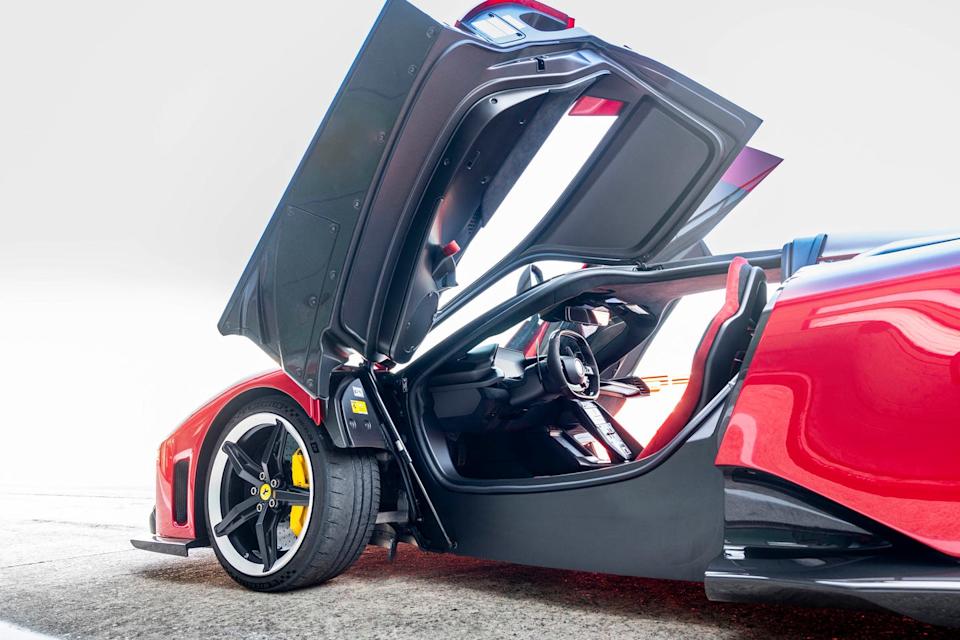 Charlie Magee - Car and Driver
Charlie Magee - Car and DriverOut on the track, the first impression is of immense limits, especially under braking. This car is fitted with Michelin Pilot Sport Cup 2R tires developed specifically for the F80 (extra-strong shoulders, for instance, to cope with the tremendous downforce), and pure mechanical grip is bounce-your-helmet-off-the-window strong. Throw in a ton-plus of downforce, and prepare to make a noise like defective bagpipes as your breath is squeezed out of your chest by what Ferrari claims is more than 2.0 g's of deceleration off the front straight. The CCM-R Plus brakes, built by Brembo Racing and used on the 296 Challenge race cars, use long-strand carbon in the rotors and are able to dissipate heat four times as effectively as standard carbon brakes. Which means that, for all practical purposes, you can punish the brakes as hard as you like and you'll run out of fuel or tread before they show the slightest sign of fatigue.
Those indomitable brakes are enhanced by active aero and an active suspension that cooperate to maximize grip at all times. Some street-legal cars that make big downforce tend to go a bit catawampus when braking off a straight into a hairpin because dive at the front end upsets the airflow under the car, which is crucial to maintaining downforce. This is not a problem for the F80, thanks to its Multimatic active dampers, which neatly zero out dive and keep the car's underbody square to the pavement even under ferocious loads. The trick dampers do not completely smother bumps and body roll, however—Ferrari deliberately tuned the car not to deliver a "magic carpet" ride, in the name of feedback.
While the dampers are doing their thing, automatically adjusting ride height and attitude, the rear wing is constantly varying its angle of attack from low drag to high downforce, and the powertrain is seamlessly managing hybrid power deployment, torque vectoring, and the lag-free electrified turbochargers, among much else. The wild thing is that, from the driver's seat, the F80 feels straightforward and approachable. You're braking and steering and throttling out of corners at a preposterous pace, unaware of all the engineering magic that's optimizing the experience hundreds of times per second. It's easy to build a complicated car but orders of magnitude harder to make a complicated car feel simple.
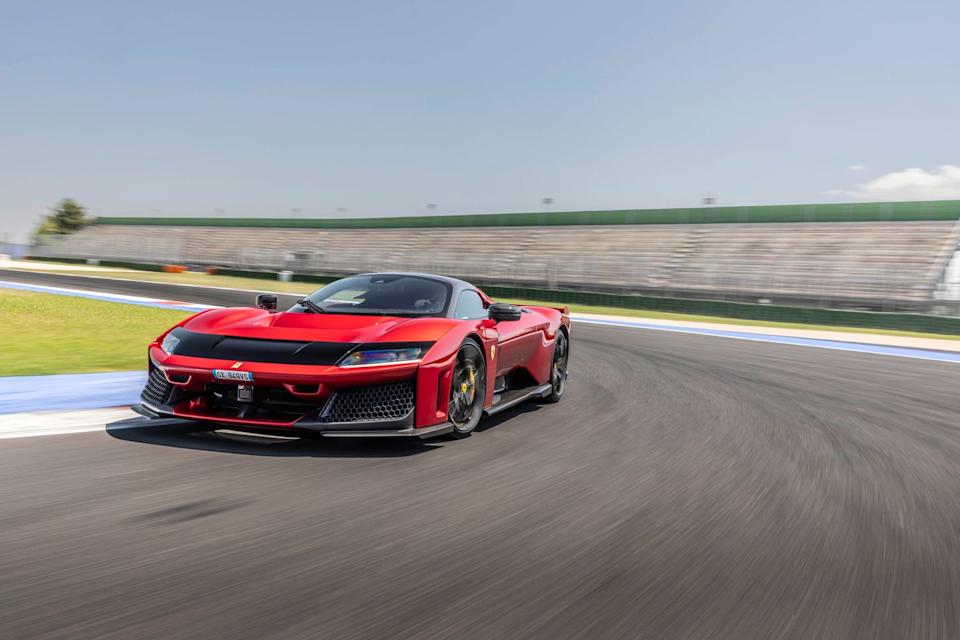 Charlie Magee - Car and Driver
Charlie Magee - Car and DriverThere are only a couple of places on Misano where you're really reminded of the F80's particular nuances. One of them is Turn 11, a sixth-gear right-hander that surely can be taken flat-out but was spooky even with a lift, simply because it's so fast. You just have to remind yourself that this car can corner harder in sixth gear than it can in second, and that's not the usual order of things.
Also, on the corners leading onto straights, you can feel Boost Optimization kick in and then taper off, and there's definitely a big difference when that extra 296 horsepower goes away. But if you're doing one lap for glory, that's not an issue. Nor, paradoxically, is it where most F80s will undoubtedly record the bulk of their miles: the street.
On the Road
Waze should have a special "F80 in Italy" setting that avoids roads that are narrower than two car widths or more commonly used by tractors than automobiles. But if you do find yourself on such roads because you've screwed up Ferrari's meticulously planned route, the F80 is a surprisingly forgiving partner. It feels huge, yes—it's nearly two feet longer than its 288 GTO progenitor and 81.1 inches wide. But the steering is precise, and the view forward is defined by those big front fenders. As for the view to the rear, a wise man once said, "What's behind me is not important." Where you'd expect a rear window, there's instead a fitted suitcase snugged up against the roof. The rearview-mirror image is from a camera feed. If video from rearview cameras makes you queasy, turn it off and just drive faster.
On the street, you always have all 1184 horsepower on tap because you'll never find a straightaway long enough to exhaust the battery. Ferrari claims 0-to-124 mph in 5.8 seconds, and the F80 feels every bit that quick when you pull out to pass a meandering Fiat Panda. The Multimatic dampers, set to their bumpy-road mode, do a great job of smothering lumpy pavement, and the front-axle-raise function is a godsend whenever you need to pull onto the shoulder.
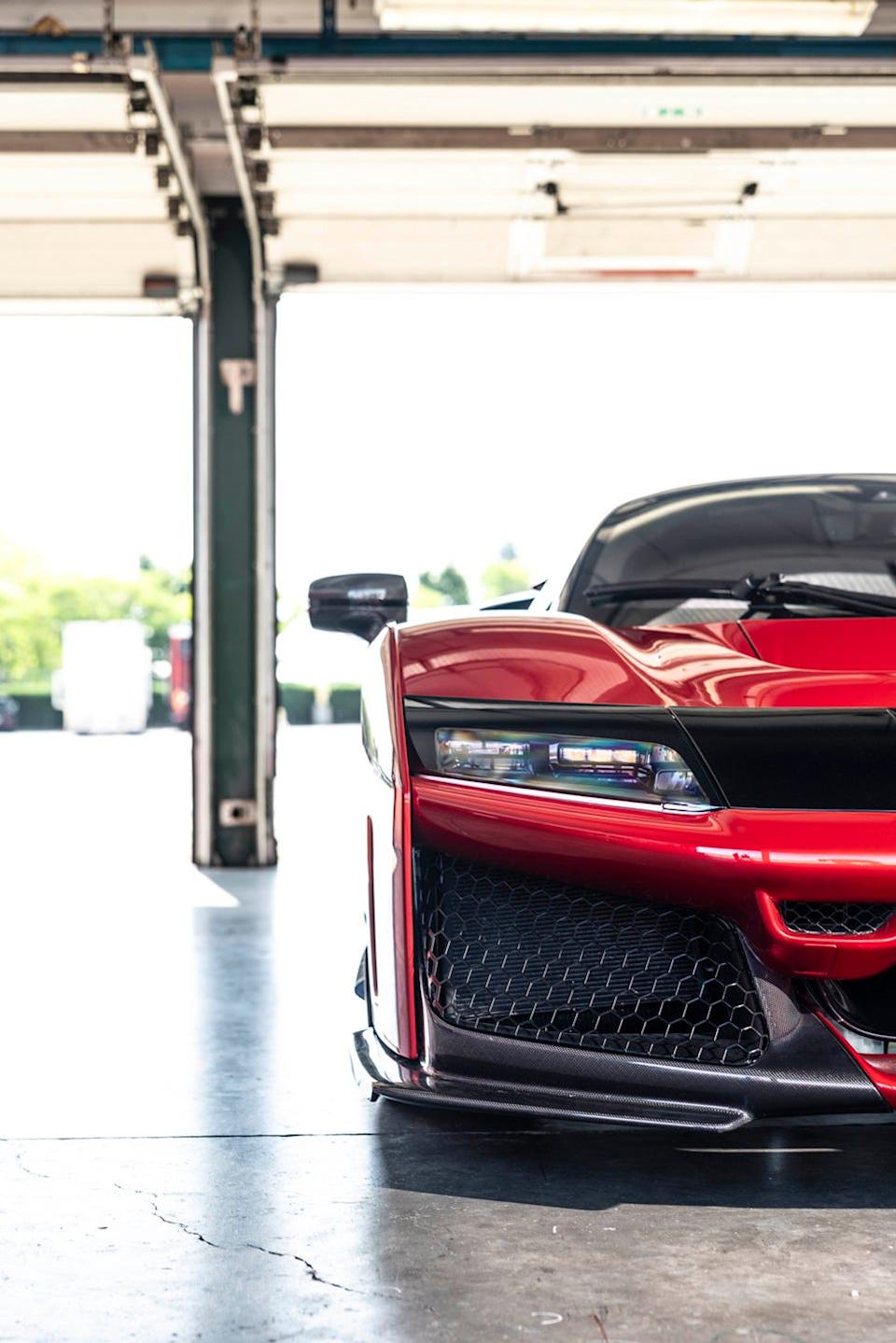 Charlie Magee - Car and Driver
Charlie Magee - Car and Driver Moreover, all those design and engineering decisions made at the altar of speed—the towering rear wing that deploys at 50 mph, the carbon-fiber wheels, the S-duct at the front end that funnels air from the underbody up over the windshield—contribute to supreme visual drama on the street. The F80 just looks absolutely bonkers out there on a public road, its underbody venturis vacuuming leaves off the pavement and shooting them out into the slipstream aft of the diffuser, the blacked-out mask across the front end connoting an inhuman and possibly malevolent intelligence.
Which, in a way, harks back to the glowering F40, a bedroom-poster car if ever there was one. But when it comes to Ferrari's halo cars, there's no template. They've had turbo V-8s, naturally aspirated V-12s, hybrid systems, and now a V-6 with all-wheel drive. They've looked sinuous and brutal and geometric, always of their era but also standing apart from it, privileged with a view from above. The F80 fits into that lineage of cars beholden to no preconceptions. It's neither self-consciously futuristic nor retro, but one glance and you know exactly what it is: the ultimate Ferrari.
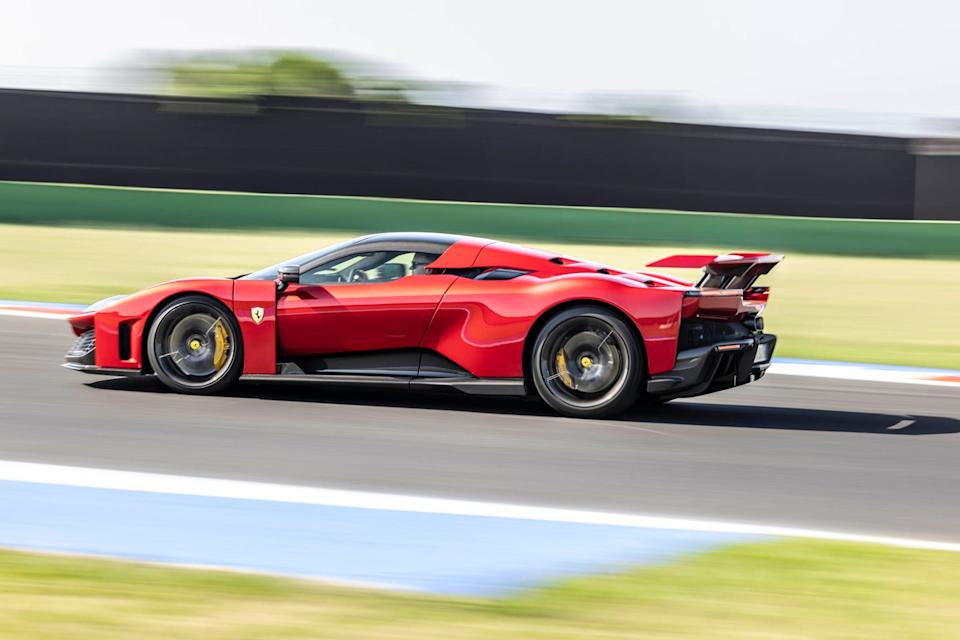 Charlie Magee - Car and Driver
Charlie Magee - Car and DriverFutureproof
What do you do when, 50 years from now, your F80 needs its high-voltage battery replaced? Ferrari has a plan for that, and it's already in effect for the LaFerrari. Ferrari will build you a new battery, sized for the F80's case, but use whatever modern chemistry is prevalent at the time. Given the progress in batteries, an F80 owner might reasonably expect their car to actually improve with age.
You Might Also Like
Car and Driver’s 10 Best Cars through the Decades
How to Buy or Lease a New Car
Lightning Lap Legends: Chevrolet Camaro vs. Ford Mustang!








